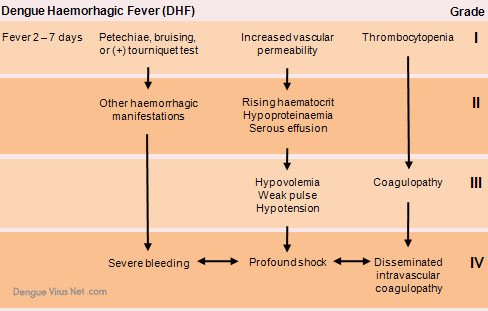The diagnosis of dengue is usually made clinically. The classic picture is high fever with no localizing source of infection, a petechial rash with thrombocytopenia, and relative leukopenia (low platelet and white blood cell count). Care has to be taken as the diagnosis of Dengue Haemorrhagic Fever (DHF) can mask end-stage liver disease and vice versa. If one has a persistent fever for over thanks, one should go for a complete blood checkup (CBC). One should take the Dengue Antigen test if the platelet count and WBC count are below their usual range.
Dengue is always a diagnosis of exclusion, and other diseases with the same initial clinical presentation must be suspected. To help the clinician in the detection of severe forms of dengue (DHF/DSS), even when the definitive diagnosis has not been made yet, the following three essential laboratory tests may help in the evaluation of the actual clinical conditions of the patient and its early supportive management:
- Total White Blood Cells Count: This test will reveal leukopenia in case of dengue. The presence of leukocytosis and neutrophilia excludes the possibility of dengue and bacterial infections (leptospirosis, meningoencephalitis, septicemia, pyelonephritis, etc.) must be considered.
- Thrombocytopenia (less than 100.000 per mm3): A total platelet count must be obtained in every patient with symptoms suggestive of dengue for three or more days of presentation. Leptospirosis, measles, rubella, meningococcemia, and septicemia may cause thrombocytopenia.
- Hematocrit (micro-hematocrit): According to the definition of DHF, it’s necessary for the presence of hemoconcentration (hematocrit elevated by more than 20%); when it’s not possible to know the previous value of hematocrit, we must regard as significantly elevated the results more than 45%.

The introduction of Rapid Diagnostic Test kits will also differentiate between primary and secondary dengue infections. They can provide reliable, immediate information on dengue diagnostics in rural areas. Serology and polymerase chain reaction (PCR) studies are available to confirm the diagnosis of dengue if clinically indicated. Dengue can be a life-threatening fever.
Etiologic confirmation can be obtained by isolating infectious viruses, demonstrating viral antigens by immunoassay, or viral genomes by PCR in serum or blood. Serologic diagnosis is achieved by IgM antibody capture by enzyme-linked immunosorbent assay (MAC—ELISA) in two blood specimens taken over a period of 14 days from each other. The first specimen, taken until the seventh day of the disease, can also be helpful for virus isolation by inoculating A. albopictus cells or adult mosquitoes with specific virus identification by immunofluorescence tests employing monoclonal antibody reagents.
Postmortem diagnosis is made by virus isolation or demonstrating viral antigen (direct immunofluorescence) from two-specimen visceral fragments (liver, spleen, link nodes, thymus).
Dengue and Chikungunya: Making the Diagnosis
Dengue fever is somewhat similar to the fever of chikungunya. Chikungunya and dengue are acute febrile illnesses with fever, myalgia, and lethargy. Some patients may also have maculopapular rash, nausea, vomiting, and headache. Distinguishing features of chikungunya include potentially debilitating bilateral polyarthralgia and, in some cases, arthritis. Although these signs and symptoms may assist in differentiating dengue and chikungunya, clinicians should consider both illnesses in their differential diagnosis of patients with acute febrile illness and recent travel to the tropics. The CDC has a comprehensive expert opinion on differentiating chikungunya from dengue: a clinical challenge (Medscape, 14 September 2014).